As a seasoned home cook, I’ve spent countless hours in the kitchen experimenting with different ways to cook boneless chicken breasts. From the humble pan-fried variety to the more sophisticated oven-roasted creations, I’ve seen it all. And let me tell you, nailing the perfect cooking time is absolutely crucial. You want a juicy, tender breast, not a dry, rubbery one. That’s why I’m sharing my ultimate guide to achieving chicken perfection, with tips and tricks for various cooking methods.
Part 1: Temperature – The Key to Success
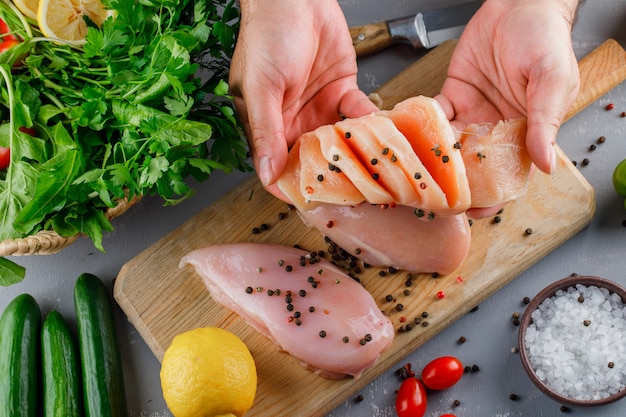
Before we dive into specific cooking times, let’s talk about the most important factor: temperature. This is where a trusty meat thermometer comes in handy. The USDA recommends cooking chicken breasts to an internal temperature of 165°F (74°C) to ensure they’re safe to eat. This ensures the chicken is cooked through and any harmful bacteria are eliminated.
Why Temperature Matters:
- food safety: Reaching the correct internal temperature is essential for killing off harmful bacteria like Salmonella, which can cause food poisoning. Imagine the disastrous consequences of serving undercooked chicken – not a scenario anyone wants!
- Tenderness: Overcooking chicken breasts leads to dryness and toughness. You’ve probably experienced this disappointment – a chicken breast that resembles a piece of rubber. By keeping a close eye on the temperature, you can prevent overcooking and ensure tender, juicy results, which is what we all strive for.
- Consistency: Temperature consistency ensures even cooking throughout the chicken breast, leading to a more satisfying culinary experience. Everyone enjoys a perfectly cooked chicken breast, with no undercooked parts or dry edges.
Part 2: Cooking Times for Different Methods
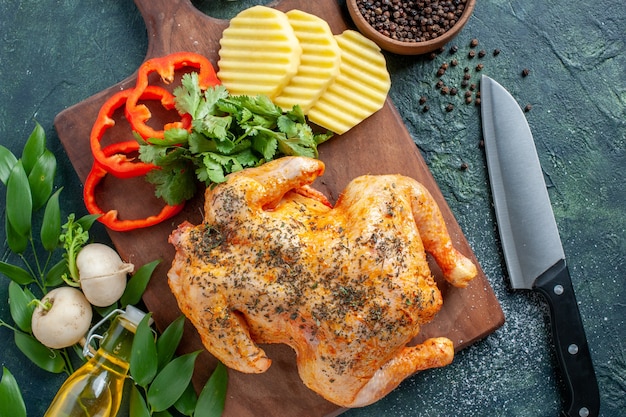
Now, let's explore the different cooking methods and their corresponding times. Remember, these are general guidelines, and you might need to adjust based on the thickness of your breasts and your personal preference.
2.1 Pan-Frying: The Quick and Easy Option
Pan-frying is a classic method that delivers crispy skin and succulent meat. It's perfect for a quick weeknight dinner or a light lunch. Here's a general guideline for pan-frying boneless chicken breasts:
- Thickness: Thin breasts (around 1 inch thick) will cook faster than thicker ones. Think of it like a thin pancake vs. a thick brownie – the thin one cooks faster!
- Cooking Time: Allow 4-6 minutes per side for thin breasts and 6-8 minutes per side for thicker breasts. It's a good rule of thumb to check the internal temperature after the initial cooking time to ensure doneness.
- Temperature: Heat your pan over medium-high heat. You should be able to see a shimmer in the oil before adding the chicken. This ensures that the chicken gets a nice sear and doesn’t steam in the pan.
- Doneness: Check the internal temperature of the thickest part of the breast with a meat thermometer. It should reach 165°F (74°C). This is the moment of truth - let the thermometer be your guide!
2.2 Oven-Roasting: A Versatile Option
Oven-roasting offers a hands-off approach, allowing you to multitask while your chicken cooks. It's ideal for larger batches or when you want a more flavorful, browned exterior. This method is great for busy weeknights when you have other things going on.
- Preheating: Preheat your oven to 400°F (200°C). It's important to preheat the oven to ensure even cooking and browning of the chicken.
- Cooking Time: Aim for 20-25 minutes for a 1-inch thick breast. Adjust the time based on the thickness of your breasts. Thicker breasts will need a bit more time.
- Doneness: Use a meat thermometer to ensure the chicken reaches 165°F (74°C). Always check the internal temperature to avoid overcooking or undercooking.
2.3 Grilling: Outdoor Delight
grilling chicken breasts outdoors brings out an irresistible smoky flavor. It's perfect for summer barbecues or a relaxing weekend meal. There's just something about the smoky flavor of grilled chicken that makes it perfect for outdoor gatherings.
- Preheating: Preheat your grill to medium-high heat. A hot grill ensures that the chicken gets a nice sear and cooks evenly.
- Cooking Time: Aim for 5-7 minutes per side for a 1-inch thick breast. Adjust the cooking time based on the thickness of your breasts and the heat of your grill.
- Doneness: Use a meat thermometer to check the internal temperature, aiming for 165°F (74°C). Don't rely on the visual appearance alone, as the color can be deceiving.
2.4 Baking: Simple and Easy
baking chicken breasts is a straightforward method that yields tender and juicy results. It's a great option for those who prefer a more hands-off approach. Baking is a great way to cook chicken when you don’t want to stand over the stove and monitor the process.
- Preheat: Preheat your oven to 375°F (190°C). Preheating the oven ensures that the chicken cooks evenly and avoids uneven browning.
- Cooking Time: Bake for 20-25 minutes for a 1-inch thick breast. Thicker breasts will need more time to cook through.
- Doneness: Use a meat thermometer to check the internal temperature, aiming for 165°F (74°C). Always check the internal temperature to avoid undercooked or overcooked chicken.
Part 3: Factors That Affect Cooking Time
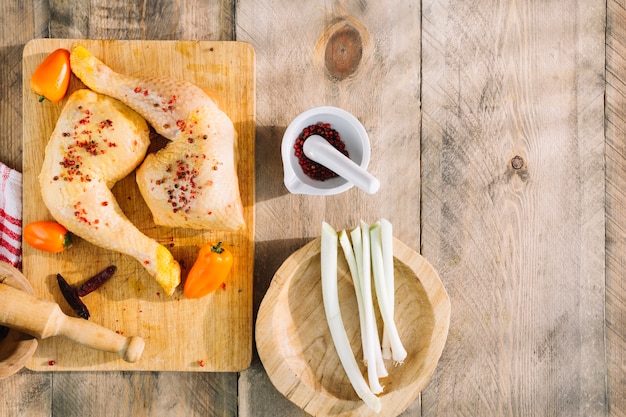
While the cooking times mentioned above are good starting points, several factors can influence how long it takes to cook your chicken breasts to perfection. It’s essential to be aware of these factors and adjust your cooking time accordingly.
3.1 chicken breast size and Thickness
The size and thickness of your chicken breasts play a significant role in their cooking time. Thicker breasts will take longer to cook through than thinner ones. It’s like cooking a thick steak compared to a thin burger patty – the thicker cut needs more time to cook all the way through.
3.2 Oven Temperature
The temperature of your oven can affect the cooking time. A hotter oven will cook your chicken faster, while a cooler oven will take longer. It's crucial to preheat your oven to the correct temperature before adding your chicken breasts. Imagine it like a bonfire – the hotter the flames, the faster the wood burns!
3.3 Density of the Chicken Breast
The density of your chicken breasts can vary depending on the breed of chicken. Some chicken breeds have denser muscle fibers than others, which can affect their cooking time. Dense breasts might require a little longer to cook through than less dense ones. Think of it like cooking a dense, flavorful pork chop compared to a leaner cut – the denser cut might need more time to cook.
3.4 Crowding the Pan or Oven
Overcrowding your pan or oven can hinder even cooking and increase the overall cooking time. Leave some space between your chicken breasts to allow for proper airflow and ensure they cook evenly. Imagine it like a crowded subway car – everyone feels squeezed and uncomfortable!
Part 4: Tips for Perfect Boneless Chicken Breast
Beyond the basics, a few extra tips can elevate your chicken breast game. These little tricks can help you achieve juicy, flavorful chicken every time.
4.1 Brine for Juicy Results
Brining your chicken breasts before cooking can work wonders for their tenderness. A simple brine solution of water, salt, and sugar helps retain moisture and prevents dryness. Simply soak your breasts in the brine for at least 30 minutes or up to overnight for best results. Imagine the chicken absorbing the brine like a sponge, plumping up and becoming juicy and delicious!
4.2 Season Generously
Don't be shy with your seasonings! Chicken breasts can handle a generous amount of flavor. Experiment with different herbs, spices, and rubs to create your signature chicken dishes. Be bold, be creative, and let your taste buds guide you!
4.3 Sear for Flavor
For added depth of flavor, sear your chicken breasts in a hot pan before finishing them in the oven or grill. This creates a delicious crust that locks in the juices and adds a crispy texture. It’s like a little kiss of flavor that adds a delightful crunch to your chicken.
4.4 Let the Chicken Rest
After cooking, let your chicken breasts rest for a few minutes before slicing or serving. This allows the juices to redistribute throughout the meat, resulting in a more tender and flavorful dish. Give your chicken a little break, and it will reward you with juicy, deliciousness.
Part 5: Troubleshooting Common Issues
Even the most experienced cooks encounter challenges in the kitchen. Here are a few common issues you might face when cooking boneless chicken breasts and how to fix them:
5.1 dry chicken breasts:
overcooked chicken breasts are a common problem. To avoid this, use a meat thermometer to check the internal temperature and remove them from the heat as soon as they reach 165°F (74°C). Consider brining or using a moist cooking method like poaching or braising to help retain moisture. Remember, less is more when it comes to cooking time – it’s better to err on the side of undercooked than overcooked.
5.2 Undercooked Chicken Breasts:
Undercooked chicken breasts are a food safety hazard. Use a meat thermometer to ensure the internal temperature reaches 165°F (74°C) before consuming. If you’re unsure, cook the breasts for a few more minutes. Don’t take any chances with food safety – always cook chicken to the correct internal temperature.
5.3 Unevenly Cooked Chicken Breasts:
Uneven cooking can occur if you overcrowd your pan or oven. Ensure you have enough space between each breast to allow for even heat distribution. If you’re using a grill, try to move the chicken around to ensure all sides are exposed to direct heat. Give your chicken room to breathe and cook evenly!
Part 6: Different cooking techniques
Now that you’ve got a handle on the basics, let’s explore some more advanced cooking techniques to elevate your chicken breast game.
6.1 Poaching: A Gentle Approach
Poaching chicken breasts in liquid, like broth or wine, is a gentle method that yields incredibly tender and succulent results. It’s perfect for delicate breasts or when you want a moist and flavorful dish. Think of it like a gentle bath for your chicken – it emerges soft, smooth, and flavorful.
6.2 Braising: Slow and Tender
Braising involves searing the chicken breasts first, then simmering them in liquid over low heat. This method breaks down tough muscle fibers, resulting in incredibly tender and flavorful chicken. It’s an excellent option for tougher cuts or when you want a rich and comforting dish. It’s like a slow, gentle massage for your chicken, transforming it into a melt-in-your-mouth experience.
6.3 Sous Vide: Precision Cooking
sous vide cooking involves sealing the chicken breasts in a vacuum bag and immersing them in a water bath set to a precise temperature. This method ensures even cooking and eliminates the risk of overcooking. It’s perfect for achieving consistently tender and juicy results. Think of it like a spa treatment for your chicken – it emerges perfectly cooked and unbelievably tender.
Part 7: Serving Suggestions
Once you've mastered the art of cooking boneless chicken breasts, it's time to explore the endless possibilities for serving them. Here are a few ideas to get you started.
7.1 Classic Chicken Dishes:
- chicken salad: A light and refreshing option, perfect for sandwiches or salads. Imagine a creamy chicken salad on a toasted croissant, or a refreshing salad with chicken and mixed greens.
- Chicken Parmesan: A comforting and satisfying dish with a crispy, cheesy crust. Who can resist a juicy chicken breast coated in cheesy goodness and baked to golden perfection?
- Chicken Stir-Fry: A quick and flavorful meal with endless variations for vegetables and sauces. The possibilities are endless! Think stir-fried chicken with broccoli and peanut sauce, or chicken with bell peppers and ginger sauce.
- Chicken Curry: A fragrant and flavorful dish that's perfect for a satisfying weeknight meal. The rich aromas of curry spice and tender chicken will transport you to another world.
- Chicken Soup: A comforting and nourishing soup, perfect for a cold day. There's nothing like a warm bowl of chicken soup to soothe the soul.
7.2 Grilled Chicken:
- Grilled Chicken Skewers: A fun and easy way to enjoy grilled chicken with your favorite vegetables. Think of colorful skewers with chicken, peppers, onions, and pineapple!
- Grilled Chicken with Lemon and Herbs: A simple and flavorful dish that's perfect for a summer barbecue. The tangy lemon and aromatic herbs will enhance the smoky flavor of the grilled chicken.
- Grilled Chicken Fajitas: A fiesta of flavors with grilled chicken, peppers, and onions served with warm tortillas. It's a surefire way to bring the fiesta to your dinner table!
7.3 pan-fried chicken:
- Pan-Fried Chicken with Creamy Mushroom Sauce: A rich and satisfying dish with a creamy, umami sauce. Imagine a juicy chicken breast topped with a velvety mushroom sauce.
- Pan-Fried Chicken with Dijon Mustard Sauce: A simple and flavorful dish with a tangy mustard sauce. The tangy mustard sauce complements the crispy chicken beautifully.
- Pan-Fried Chicken with Lemon and Garlic: A bright and refreshing dish with a zesty lemon-garlic sauce. This dish is packed with flavor and a burst of freshness.
7.4 Oven-Roasted Chicken:
- Oven-Roasted Chicken with Roasted Vegetables: A complete meal with tender chicken and seasonal vegetables. Imagine a medley of colorful vegetables roasted to perfection with juicy chicken.
- Oven-Roasted Chicken with Herbs and Garlic: A simple and flavorful dish with fragrant herbs and garlic. This dish is full of earthy flavors and aromatic herbs.
- Oven-Roasted Chicken with Lemon and Rosemary: A sophisticated dish with the flavors of lemon and rosemary. This dish is perfect for a special occasion or when you want to impress your guests.
Part 8: FAQs
Here are some frequently asked questions about cooking boneless chicken breasts.
8.1 How long should I cook boneless chicken breasts in the oven?
The cooking time for boneless chicken breasts in the oven depends on their thickness. Generally, it takes around 20-25 minutes for a 1-inch thick breast at 400°F (200°C). However, it's always best to use a meat thermometer to ensure the internal temperature reaches 165°F (74°C). Remember, it’s better to err on the side of caution and check the internal temperature to ensure it’s cooked through.
8.2 What are some good ways to prevent chicken breasts from becoming dry?
There are several ways to prevent chicken breasts from becoming dry. Brining, using a moist cooking method like poaching or braising, and ensuring the chicken is cooked to the correct internal temperature can all help to retain moisture. Avoid overcooking the chicken, and let it rest for a few minutes after cooking to allow the juices to redistribute. Think of it like giving your chicken a little spa treatment to keep it juicy and tender.
8.3 Can I cook chicken breasts from frozen?
You can cook chicken breasts from frozen, but it will take longer. It's best to thaw the chicken breasts in the refrigerator overnight or in a bowl of cold water for a couple of hours before cooking. If you're cooking from frozen, add about 50% more time to your cooking instructions. It's always best to cook chicken from thawed for better results and even cooking.
8.4 How can I tell if chicken breasts are cooked through?
The best way to tell if chicken breasts are cooked through is to use a meat thermometer. The internal temperature should reach 165°F (74°C). You can also check for visual cues, such as the chicken being opaque and no longer pink in the center. The juices should run clear, not pink. Don't rely solely on visual cues as they can be deceiving. Use a thermometer to ensure food safety and a perfectly cooked chicken breast.
8.5 What are some good sides to serve with boneless chicken breasts?
There are endless possibilities for sides to serve with boneless chicken breasts. Some popular options include roasted vegetables, mashed potatoes, rice, couscous, pasta salads, and green salads. Choose sides that complement the flavors of your chicken dish. Think about the flavors of your chicken dish and choose sides that will enhance the overall experience.
Part 9: Conclusion
Cooking boneless chicken breasts to perfection is an art form, but it's one that anyone can master with a little practice and attention to detail. By understanding the basics of temperature, cooking times, and different techniques, you can consistently achieve juicy, flavorful chicken breasts that will impress your family and friends. So, grab your apron, gather your ingredients, and get cooking! You'll be surprised at how easy it is to cook perfect chicken breasts with the right knowledge and techniques.
Everyone is watching

How to Cook Frozen Lobster Tails Perfectly: A Step-by-Step Guide
RecipesLobster. Just the word conjures up images of lavish meals, special occasions, and a taste of luxury. But let's...

Pigs in a Blanket Cooking Time: How Long to Bake for Perfect Results
RecipesAh, pigs in a blanket. Just the name conjures up images of those delightful little parcels of crispy pastry en...

Pork Fillet Cooking Time: How Long to Cook It Perfectly
RecipesPork fillet, or tenderloin as it's sometimes called, is a real favourite in our house. It's so versatile, and...
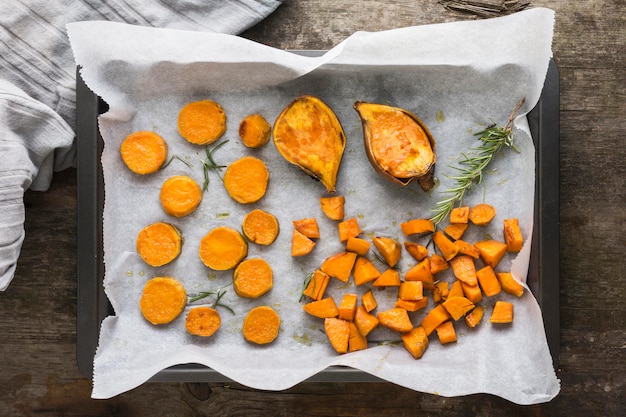
The Ultimate Guide to Cooking Sweet Potatoes: From Roasting to Mashing
RecipesSweet potatoes. Just the name conjures up images of warm, comforting dishes, bursts of vibrant color, and a to...
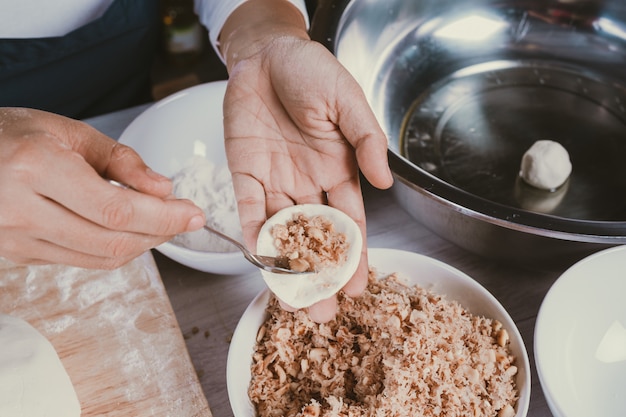
The Ultimate Guide to Tender, Juicy Pulled Pork
RecipesRight, let's talk pulled pork. It's one of those dishes that just screams "comfort food," doesn't it? I mean...
